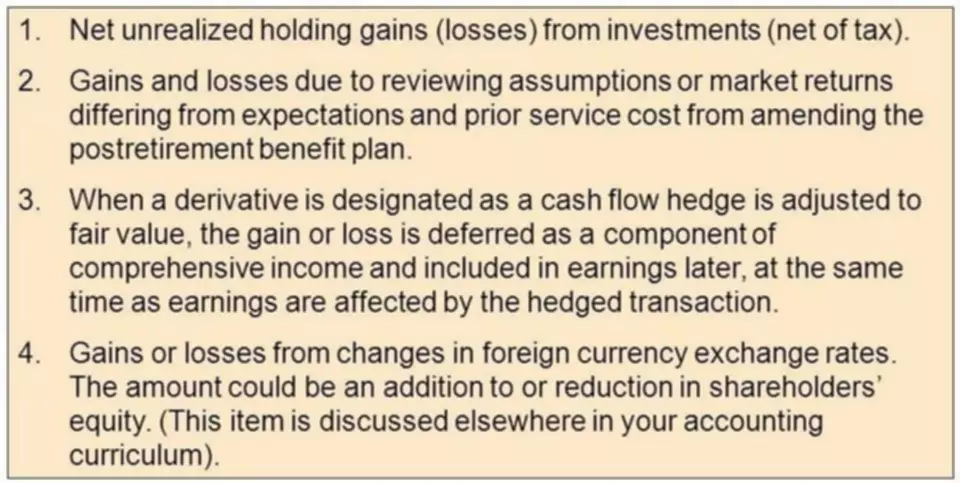Closing Entry Definition, Explanation, and Examples
Content

If the income summary account has a credit balance after completing the entries, or the credit entry amounts exceeded the debits, the company has a net income. If the debit balance exceeds the credits the company has a net loss. Now, the income summary must be closed to the retained earnings account. Perform a journal entry to debit the income summary account and credit the retained earnings account. Are accounts that are closed at the end of each accounting period, and include income statement, dividends, and income summary accounts.
- Closing is a mechanism to update the Retained Earnings account in the ledger to equal the end-of-period balance.
- As you will learn inCorporation Accounting, there are three components to the declaration and payment of dividends.
- The second entry requires expense accounts close to the Income Summary account.
- You are a newly hired accountant for Boss Consultants Inc (“Boss”), a consulting firm located in Chicago.
- The remaining balance in Retained Earnings is $4,565 the following Figure 5.6.
- Several internet sites can provide additional information for you on adjusting entries.
The first entry closes revenue accounts to the Income Summary account. The second entry closes expense accounts to the Income Summary account. The third entry closes the Income Summary account to Retained Earnings. The fourth entry closes the Dividends account to Retained Earnings. To further clarify this post closing trial balance concept, balances are closed to assure all revenues and expenses are recorded in the proper period and then start over the following period. The revenue and expense accounts should start at zero each period, because we are measuring how much revenue is earned and expenses incurred during the period.
What is Post Closing Trial Balance?
Any funds that are not held onto incur an expense that reduces NI. One such expense that is determined at the end of the year is dividends. The last closing entry reduces the amount retained by the amount paid out to investors.
- The unadjusted trial balance is prepared after entries for transactions have been journalized and posted to the ledger.
- Are accounts that transfer balances to the next period and include balance sheet accounts, such as assets, liabilities, and stockholders’ equity.
- At the end of the accounting period it doesn’t involuntarily go down to zero .
- When closing the revenue account, you will take the revenue listed in the trial balance and debit it, to reduce it to zero.
- However, it will provide a better audit trail for the accountants who review these at a later point in time.
- Revenue and expense accounts in the income statement are considered temporary accounts.
- If a company’s revenues are greater than its expenses, the closing entry entails debiting income summary and crediting retained earnings.
It will describe the steps to post closing entries to the general ledger and prepare a post closing trial balance. As with theunadjustedandadjusted trial balances, both the debit and credit columns are calculated at the bottom of a trial balance. If these columns aren’t equal, the trial balance was prepared incorrectly or the closing entries weren’t transferred to the ledger accounts accurately. To close the revenue accounts for Bob’s Donut Shoppe, we need to debit the revenue account and credit the income summary account. This will ensure that the balances of the revenue account are transferred to the income summary account. To close the income summary account to the retained earnings account as mentioned earlier, we need to debit the income summary account and credit retained earnings account.
Closing Entry
The first entry closes revenue accounts to the retained earnings account. The second entry closes expense accounts to the retained earnings account. The third entry closes the dividend account to the retained earnings account.

These account balances do not roll over into the next period after closing. The closing process reduces revenue, expense, and dividends account balances to zero so they are ready to receive data for the next accounting period. Now that the post closing trial balance is prepared and checked for errors, Paul can start recording any necessaryreversing entriesbefore the start of the next accounting period. Some common examples of closing entries include the closing of revenue accounts, expense accounts, and dividend accounts. All of the temporary accounts have now been closed, and at this point the income summary account should have a balance which is equal to the net income shown on Bob’s income statement. Permanent accounts, on the other hand, track activities that extend beyond the current accounting period. They are housed on the balance sheet, a section of the financial statements that gives investors an indication of a company’s value, including its assets and liabilities.
CUSTOMER SERVICE
What are your total expenses for rent, electricity, cable and internet, gas, and food for the current year? You have also not incurred any expenses yet for rent, electricity, cable, internet, gas or food. This means that the current balance of these accounts is zero, https://www.bookstime.com/ because they were closed on December 31, 2018, to complete the annual accounting period. Permanent accounts are accounts that show the long-standing financial position of a company. These accounts carry forward their balances throughout multiple accounting periods.
- Journal entries that are prepared to reset all temporary accounts to a zero balance and update Capital to a new balance.
- This accounts list is identical to the accounts presented on the balance sheet.
- The closing entries serve to transfer these temporary account balances to permanent entries on the company’s balance sheet.
- Thus, at the end of an accounting period, revenues and expenses must be closed out and so they can start anew at zero balance for the next period.
- All revenue and expense accounts must end with a zero balance because they are reported in defined periods and are not carried over into the future.
Just like in step 1, we will use Income Summary as the offset account but this time we will debit income summary. The total debit to income summary should match total expenses from the income statement. The post closing trial balance is a list of all accounts and their balances after theclosing entries have been journalized and posted to the ledger.
The Accounting Cycle And Closing Process
At the end of the accounting period it doesn’t involuntarily go down to zero . They are accounts that pertain to either assets, liabilities, or owner’s equity. Permanent – balance sheet accounts including assets, liabilities, and most equity accounts. So, the ending balance of this period will be the beginning balance for next period. Once this closing entry is made, the revenue account balance will be zero and the account will be ready to accumulate revenue at the beginning of the next accounting period. Permanent accounts, like the balance sheet that they feed, show the cumulative total of past efforts.
When all accounts have been recorded, total each column and verify the columns equal each other. A closing entry entails resetting the balances of temporary accounts and permanent accounts, in which the balance of temporary accounts is zero and the balance of the permanent accounts increase. The income summary is important in a closing entry, this is the summary used in the aggregation of all income accounts.
As a result, the temporary accounts will begin the following accounting year with zero balances. Journal entries that are prepared to reset all temporary accounts to a zero balance and update Capital to a new balance. Journal entries that are needed in order to update specific ledger accounts to reflect correct balances at the end of an accounting period. When dividends are declared by corporations, they are usually recorded by debiting Dividends Payable and crediting Retained Earnings. Note that by doing this, it is already deducted from Retained Earnings , hence will not require a closing entry.

Account is an intermediary between revenues and expenses, and the Retained Earnings account. It stores all of the closing information for revenues and expenses, resulting in a “summary” of income or loss for the period.
